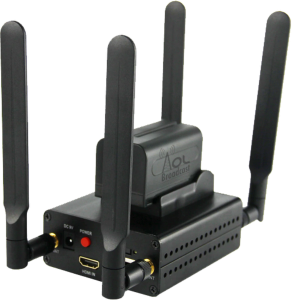Video Optimization Origins
Today is the time where smartphones became the new must-have electronic gadget for everyone to own because of its compactness and functionality.
This gadget also changed the playing field in Video content creation processes required to play these kinds of materials on these smartphones.
The need for quick playing video clips that do not eat a lot of bandwidth when a handheld device plays it rose to the surface quickly.
To solve the rapidly growing demand for video optimization technologies advanced to keep up with the fast-growing number of smartphone users initiating playback of this kind of content on their phones.
The following list shows the different methods of video optimization that is implemented that makes video content playback more convenient for you.
Transcoding –
 This is the act of interchanging a specific Video encoding of a video to suit your needs in terms of playing it to any device.
This is the act of interchanging a specific Video encoding of a video to suit your needs in terms of playing it to any device.
There is a two-step process required to do this video optimization method that happens right behind your eyes,
- one is the decoding of the video you uploaded on a video sharing site,
- the other one is its recording to different file formats, tailor-fit to cater different kinds of devices that will play the Content.
Subsequently, it can also help smartphone users to play lower quality, but the optimized video for their gadgets.
Full Transcoding –
 A more thorough way of video file conversion compared to Transcoding, this technique involves completely encoding and recording of your digital media that enables you to change the file’s resolution and codec encryption. Using this method improves the video’s buffering time more efficiently.
A more thorough way of video file conversion compared to Transcoding, this technique involves completely encoding and recording of your digital media that enables you to change the file’s resolution and codec encryption. Using this method improves the video’s buffering time more efficiently.
However, it will also strain your handheld device’s CPU in the process due to the nature of the task being a process that converts the files into a vast amount of forms the video was encoded and what version your device must get to show to its screen.
Transrating –
 It involves altering the course in which the video input stream plays.
It involves altering the course in which the video input stream plays.
There are three factors in how to change the stream input of the video played using this technique.
- First is via determining if by reducing the bit rate of a video will not affect its viewing quality.
- Second is by lowering the quality of the clip and its viewing screen size based on identifying the type of device streaming the content.
- Finally, determining the type of network connection used to play the visual presentation and adjusting the attribute of the file to provide uninterrupted playback to the viewer.
However, unlike Transcoding, it does not modify the base content of your uploaded Content such as its file codec, resolution, and any of its other attributes.
Adaptive bitrate –
The video optimization technology aimed to solve streaming videos with bitrates higher than what is usually required to play it on your device. The process augments the common problem streaming video clips presents to its viewers like you, that it must play at a predetermined bitrate, no matter the device used to view it.
This causes the video to load slower than usual, especially when the network configuration of the device used to play it uses the slow-speed connection to the internet.
This method encodes a video on multiple bitrates and automatically searches for the optimal way to deliver the content to you uninterrupted, by identifying the speed of the connection that the user currently has.
If the ABR video provider detects a slower internet connection on your end, it will queue the next part of the clip on a lower bitrate. However, in the event that your connection is enough to play the next sequence of the clip with better quality, it will increase the bitrate of the next part it will show to you.
Cloud –
 This type of approach involves using a third-party cloud storage facility that will cache the transcoded video Content, giving only the part of the video you requested.
This type of approach involves using a third-party cloud storage facility that will cache the transcoded video Content, giving only the part of the video you requested.
The most obvious advantage of this method is that it smoothens the way the video’s bitrate adaptation to the certain requested quality you want. Therefore, there will be no need for the people watching your videos to buffer it for long periods of time.

